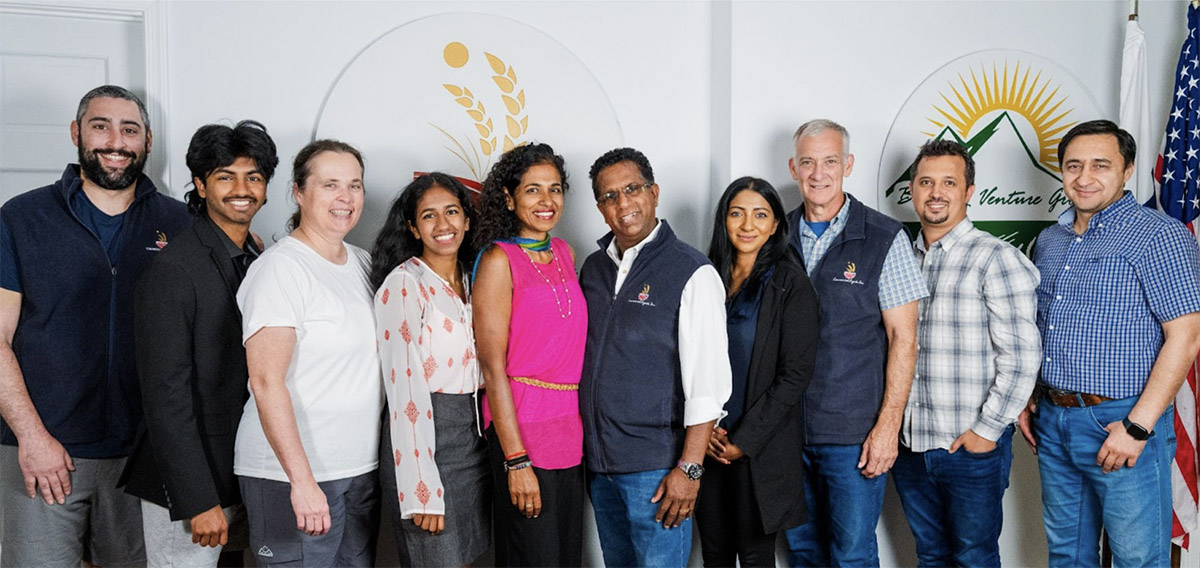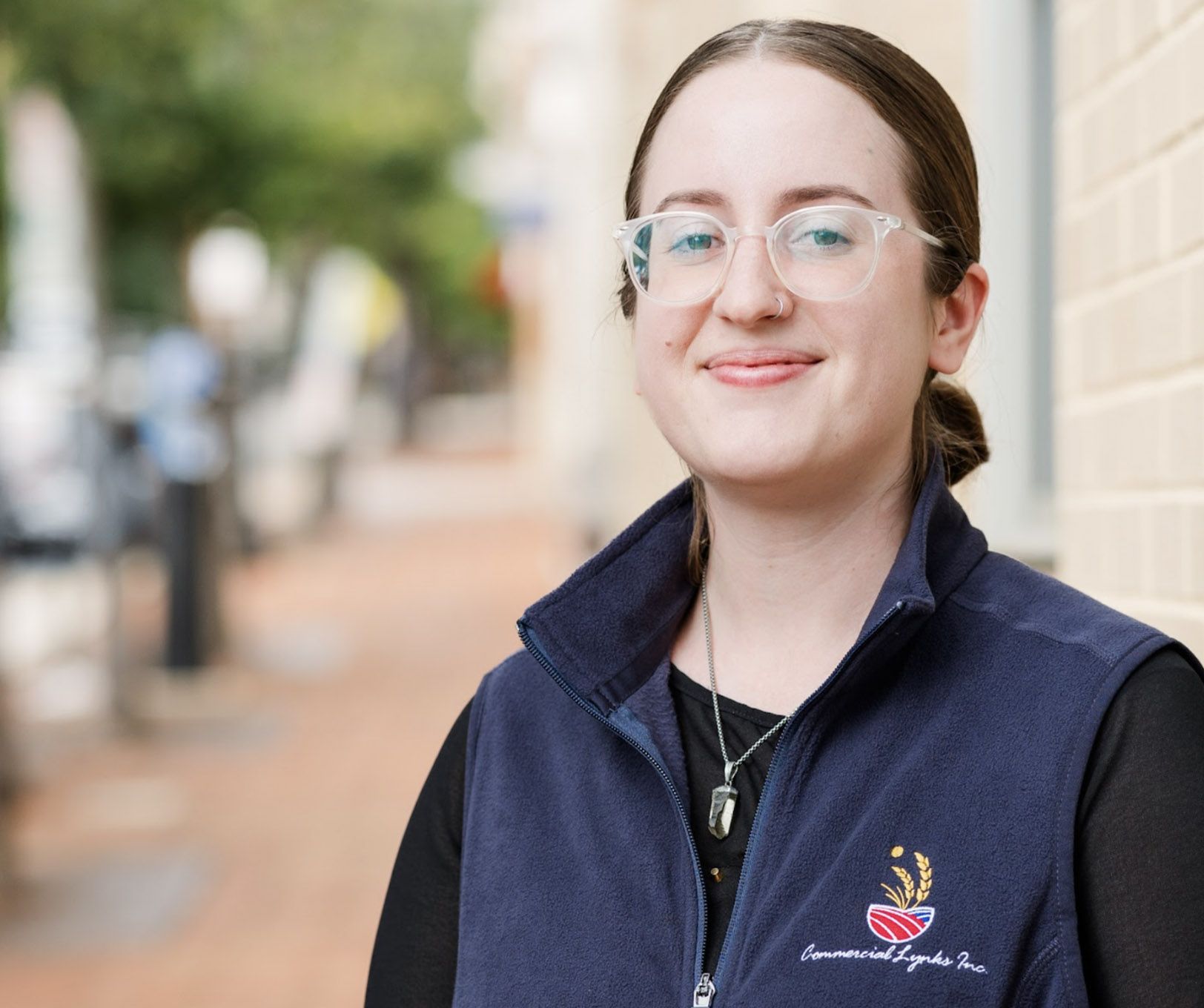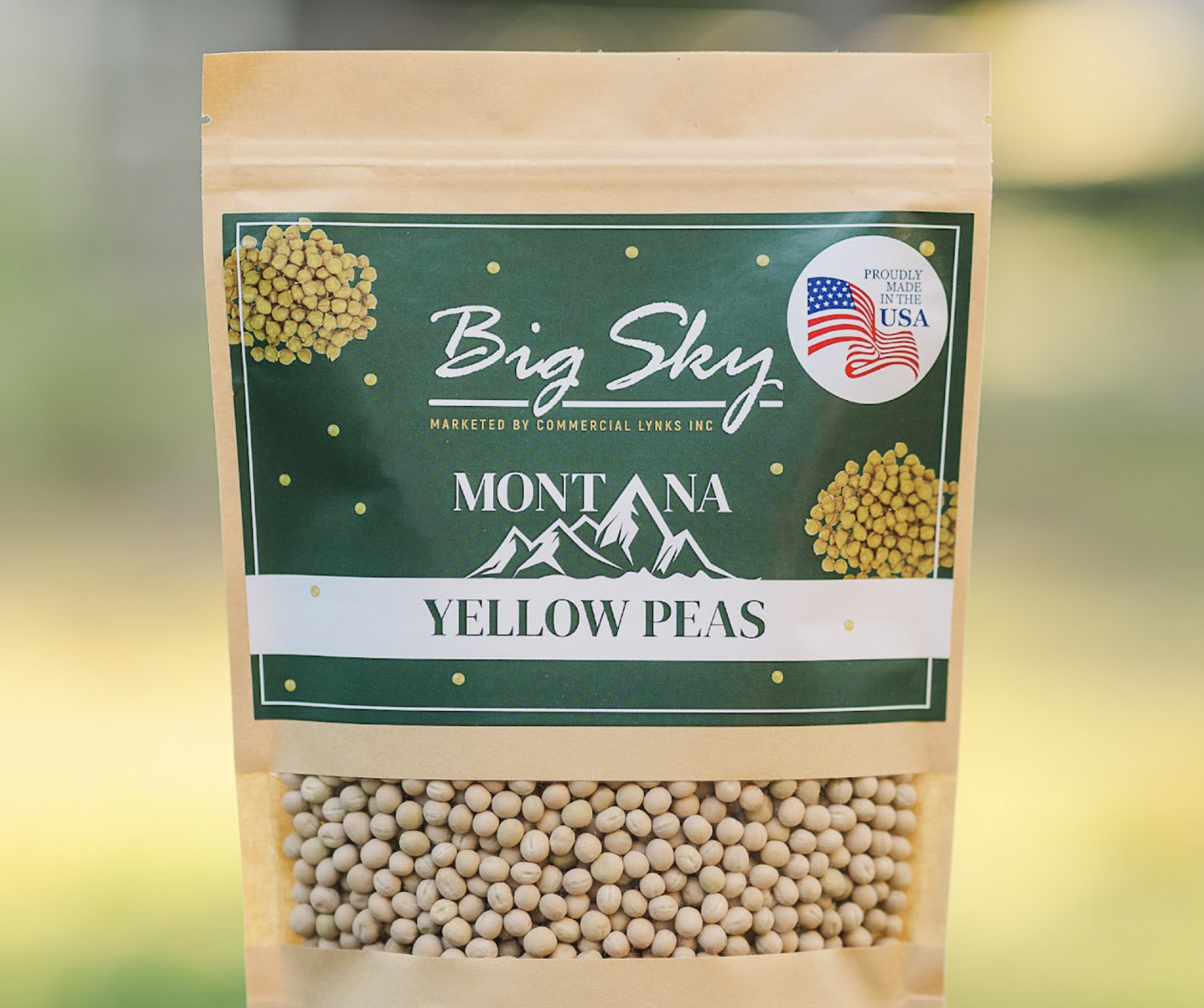November 29, 2023
Shanthi Gnanasekaran and Hannah Fratt, Marketing Assistant and Logistics Specialist for Commercial Lynks, Inc discuss a strong year for yellow peas and domestic chickpea consumption in the USA.



Shanthi Gnanasekaran: We are headquartered in Virginia but most of our product comes from Montana and some from North Dakota. The markets interested in our product are mostly in East Asia. For the last 3 to 4 years we've been concentrating on that area – mostly trading peas and lentils – but the Indian import tariffs took out one of our key markets. With the recent lift in these restrictions, India has made steps towards improving its pulse availability. Sri Lanka is also working towards a better market presence. We have also expanded into South America and Europe, but we remain focused on Asia. Pakistan is another important market.

Shanthi Gnanasekaran
Hannah Fratt: Green peas comprise a significant chunk of what we do, but it really depends if we’re going for the export market, government contracts, or domestic sales – typically we aim to split our sales in thirds between these. In Asia, a lot of our export contracts are for whole green peas and green lentils. That changes for government contracts, where yellow peas, lentils, and green split peas are stronger.
During the pandemic, when China slowed down, we really pivoted towards government contracts. However, at this time of year, the US government is still working on finishing up the budget so the contracts tend to slow down.

Hannah Fratt
HF: I think there are two reasons production has been high: firstly, we had a satisfactory crop – more than we expected based on drought conditions in previous years and other climate factors. The other reason is that farmers are finding yellow peas more profitable because of diversification in the market. I think farmers are generally content with pricing and have more of a proclivity to sell yellow peas and contribute more acreage to it.
It's hard to pinpoint one category that is driving the surge in yellow peas, but we’ve seen an expansion in its use in pet food and as a food ingredient – pea protein specifically – and we are also seeing more government contracts. The USDA, with external stakeholders such as Catholic Relief Services, USAID, or the World Food Programme (WFP), is purchasing a significant amount of yellow peas – typically yellow split peas – for international humanitarian assistance. Their contracts have come out bi-monthly, and we see a lot of those numbers becoming more significant compared to other pulses. Sometimes 2000 MT, but sometimes as much as 6000 or 7000 MT.

HF: Speaking about Montana, where 90% of our yellow peas come from, we're seeing farmers keen to sell their crops in anticipation of the harvest, or directly after harvest, but now many are holding onto the leftover stock until the New Year. Demand remains steady while stocks are low, so we're expecting the prices of all commodities, including yellow peas, to start to increase in the coming months.
HF: China is a key green pea market for us, but we also have our eyes on LatAm and Europe. Russian green peas are price competitive, but the quality is not as good as US-origin. US peas are of superior quality, and we have a diverse selection of varieties, which China prefers for canning and snack foods. Russia is still experimenting in this market, and it will take a few more years for them to get up to our standard.
“US peas are of superior quality, and we have a diverse selection of varieties, which China prefers for canning and snack foods. Russia is still experimenting in this market, and it will take a few more years for them to get up to our standard.”
SG: Chickpeas are a crop we prioritize as they were instrumental in how we got started, but the chickpea market can actually be very volatile. There was a high demand for Kabuli chickpeas around the world after the short crops in Southeast Asia and other regions like Mexico and Argentina. We are predicting that if those countries have a strong harvest, American chickpea prices may become less competitive.
Market prices are greatly affected by region-specific varieties – if another country is looking for a larger size chickpea than what we offer in the US, then those larger sizes – 12 mm and above – may become more competitive. We know from exploring trade patterns in Spain with the USDA, that buyers there look for larger chickpeas as the consumers are more particular about the size, texture, and appearance. The size is very important, but the way that we can compete with that is through pricing. We may have something smaller, but our price will be better.
SG: We believe the domestic market for chickpeas is growing with the different food products available, such as cereal, hummus, chips and snacks, and chickpea flour-based pastries – they're a very sustainable and lucrative product.
We do see an increase in internal US pulse consumption, but it is sometimes difficult to track. One of the ways we track it is by looking at flexitarian diets. The supermarket Sprouts did a study in 2021 on the number of flexitarian diets in the US, and the rate is at about 47% – that's a pretty high rate of people who explore both meat and vegetarian options but try to limit their meat intake.
“The supermarket Sprouts did a study in 2021 on the number of flexitarian diets in the US, and the rate is at about 47% – that's a pretty high rate of people who explore both meat and vegetarian options but try to limit their meat intake.”
SG: We came across the Mind Blown eight months ago at a trade show, and as family-run companies, we really connected, so we soon began to distribute for them. They’re still a relatively new product, so we’re using our experience in Southeast Asia to help them expand their consumer base into that region – that's our big goal. The founders have been in the seafood industry for over 20 years and now they are using peas, chickpeas, and other clean ingredients to create a tasty alternative to seafood.
HF: One of the reasons we paired with them was simply the overlap of our values. They’re really committed to sustainability, quality, protein sources and nutrition. They're also interested in being stewards to the environment, providing traceability, and US-grown ingredients.
HF: I think we can draw two conclusions: one, is that the market became oversaturated seeing the success of products imitating meat and a lot of companies jumped on the bandwagon promising texture, taste, price, and nutrition that they simply couldn't deliver. A second point is that I've seen people become more hesitant towards plant-based foods because of the ingredients behind these products – the laundry list of ingredients compared to the single ingredient you get in a steak has been an issue. Some of the plant-based meat alternatives have not always been healthy.
I think the best way for companies to hold onto a section of the market is to have more innovation and excitement and to create products that are novel and interesting. If we try to replicate the same things over and over, consumers will get bored and the overall market share will continue to decline.
HF: Primarily we’ve sold yellow peas to the pet food market, and we’ve seen that demand remain relatively steady. We also sell some chickpeas and lentils to the market, but at a lower rate – this may be due to price as chickpeas are sometimes a more premium commodity compared to yellow peas. An interesting thing I've seen in the Pet food sector is that overall trends of human consumption have translated over to Pet food – we’ve seen a lot of younger Americans care deeply about their pets' nutrition and will see their overall spending behaviors towards pets during and after the pandemic have changed. I think pulses as an ingredient are going to be an important part of that change.
HF: Regarding the health concerns that were raised, I'd love to thank the US Dry Pea and Lentil Council who have done amazing work for American companies to help dispel that myth.
They've disproven the claim and done a lot of marketing and scientific research that we and other stakeholders have been grateful for. I'd say the market has partially rebounded, but not fully. With any claim being made against food, once the claim has been made, it's out there and it's hard to retract it.
HF: Yellow peas are the most preferred pulse for the feed sector, but we've seen increased interest in other pulses like chickpeas, lentils, fava beans, and lupin beans. Most of our products going into the feed sector are not the whole commodities, but screenings and other byproducts such as fiber or meal. I think that's a great opportunity for us to limit waste, not just from a financial perspective, but from a sustainability and environmental one too.
Another benefit is that pulses as feed are a relatively sustainable crop compared to traditional feed crops such as soy or corn. Nutrition can sometimes be a factor in terms of protein levels, but we find that a proper formulation using yellow peas means they are very much in demand in the feed sector today.

yellow peas / green lentils / kabuli chickpeas / green peas / Commercial Lynks / USA pulses / China / Russia
Disclaimer: The opinions or views expressed in this publication are those of the authors or quoted persons. They do not purport to reflect the opinions or views of the Global Pulse Confederation or its members.